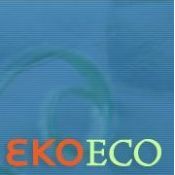On the Blog: ACR Salutes Voluntary Carbon Innovators
Even as the voluntary carbon market is enamored with the risk and potential gains from engaging compliance systems, occasionally it receives a gentle reminder that the voluntary customers that launched this market are still out there. The winners of the American Carbon Registry’s recent program-level awards give readers a 360 look at some recent examples of innovation in the voluntary carbon market.

NOTE: This article appeared first on EKO-ECO Blog. Find the original post here.
29 March 2011 | So the fate of your AB32-compliant credits is still up in the air (so to speak). So the value of your multi-million dollar investment in Chicago Climate Exchange credits took a hit. So the sweeping federal program to cap emissions in the US, unite regional programs and make all your pre-compliance dreams come true… well, you know.
Over the last few years, the voluntary carbon market has grown by leaps and bounds – not only on the platform of mitigating extreme climate change, but on the promise of mitigating the compliance costs of mandatory emissions trading programs.
And also based on the potential for making bank by having the best guess as to what voluntary credit types would be most appealing to regulators.
The voluntary carbon market has more recently experienced a host of challenges – not to its own merits, but as a result of its entanglement with stalled emissions trading legislation the world over. And yet it keeps coming back for more.
But even as the voluntary carbon market is enamored with the risk and potential gains from engaging compliance systems, occasionally it receives a gentle reminder that the voluntary customers – the financial institutions, airline companies, online retailers, shipping companies, travel agencies, governments and individuals that launched this market – are still out there. They’re offset small-scale emissions, progressing with alternative transaction platforms, engaging small projects with the big picture and making the voluntary carbon market work within the broader regulatory framework.
In fact, the winners of the American Carbon Registry’s recent program-level awards give readers a 360 look at some recent examples of innovation in the voluntary carbon market – featuring project developers, buyers and thinkers. As long as ACR is doing all the heavy lifting in terms of picking winners, let’s shift gears from macro to micro and take a look at some of their accomplishments.
Run, Forest, Run!
Nike received ACR’s Commitment to Quality award for its long-standing commitment to CO2 reductions – and by long-standing, we mean over a decade of engagement in the voluntary carbon market as an offset supplier.
Little known fact: Nike launched a project in the mid-1990’s to phase out the sulfur hexafluoride (SF6) gas in their shoes’ air bags. That’s right – that pump in your jump was once powered by a super GHG-heavy industrial gas, which generated millions of carbon credits by the time it was fully replaced with climate friendly alternatives in 2006.
Of course, early vintage industrial gas MtCO2e are not the hottest carbon commodity right now, compared to more “charismatic” options like forestry and clean cook stoves.
So Nike is turning up the heat on its credits by launching the Mata no Peito program (details to come), which will use its offsets as the basis of a venture to protect and recover forests throughout Brazil.
Xcel-ent
Xcel Energy was honored with ACR’s Utility Excellence award for going above and beyond its mandatory renewable energy installation to offer additional consumer offsetting options.
While thanking the academy, Xcel’s Steven Plevniak described the utility’s innovative offsetting pilot in Colorado which came about when Xcel overshot the volume of Renewable Energy Certificates (RECs) it needs to comply with Colorado’s stringent Renewable Portfolio Standard (RPS) and decided to turn this to the customers’ advantage.
“We’re actually ahead of schedule and have more RECs than we need for compliance, so we went to the carbon market to sell those additional RECs,” Plevniak explains.
He says that the proceeds of those RECs sales will be used for Xcel’s pilot offset purchase program – investing in forestry, ag methane and landfill gas and representing one of the first programs in the country to use the proceeds from REC sales to invest in CO2 reductions.
“You get the clean energy at the front end and also carbon reductions. It’s a win-win program,” Plevniak says.
A Finite Resource
And then there’s Finite Carbon, which received ACR’s Innovation award for the development of the world’s first forest carbon risk mitigation product, the Carbon Reduction Guarantee, which allows companies to mitigate unforeseeable environmental risks or “reversals” up-front at a pre-determined cost.
ACR’s Mary Grady describes the Carbon Reduction Guarantee as “a very strong product that is picking up speed and there’s a lot of consumer interest in that.” Finite Carbon President Scott Nissenbaum says the company will soon announce registration of the first project to utilize the Carbon Reduction Guarantee.
Stay tuned to Ecosystem Marketplace (and sign up for our bi-weekly V-Carbon news briefs) as we expand this snapshot of purely voluntary climate actions into more “big picture” coverage of these and other companies’ unique market offerings.
Please see our Reprint Guidelines for details on republishing our articles.

